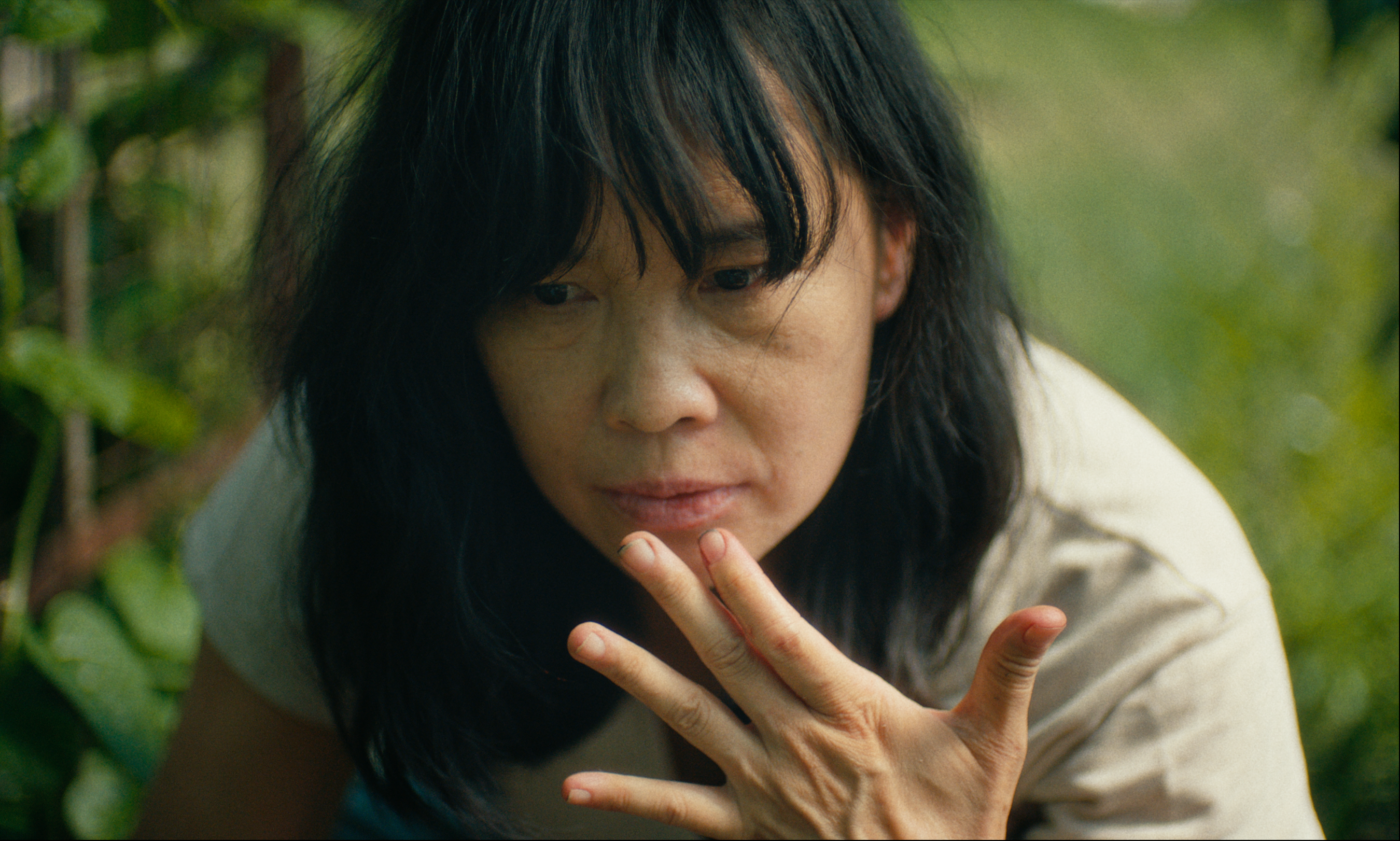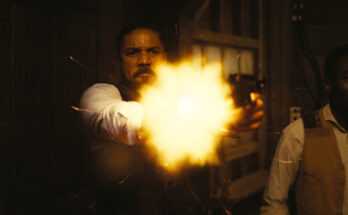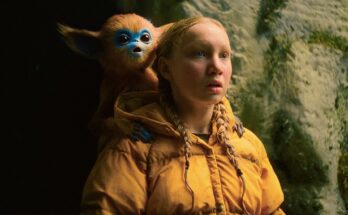Want to hear more from the actors and creators of your favorite shows and films? Subscribe to The Cinema Spot on YouTube for all of our upcoming interviews!
Managing editor & film and television critic with a Bachelor's of Arts in English Literature with a Writing Minor from the University of Guam. Currently in graduate school completing a Master's in English Literature.
For years now, an array of films have experimented with the formula that delivers a palatable food-centric narrative, and A Fermenting Woman is not much different. Pixar Animation Studios popularized “anyone can cook” with Brad Bird’s Ratatouille in 2007. Over a decade ago, filmmaker Jon Favreau gave Western audiences his road trip comedy-drama, Chef. Nahnatchka Khan gave West Coast foodies her romantic comedy, Always Be My Maybe, via Netflix in May 2019. In the past few years, the West has gotten Christopher Storer’s award-winning comedy-drama series The Bear, as well as Mark Mylod’s satirical black comedy horror film, The Menu.
A Fermenting Woman is different…in a sense. The twenty-four-minute horror short screened at Fantastic Fest earlier this month, and it’s surely a gut-wrenching narrative at or just under the same levels as Julia Ducournau’s Raw. It enters my list of viscerally repugnant horror shorts, next to Ari Aster’s The Strange Thing About the Johnsons, Damien Leone’s Terrifier, and Parker Finn’s Laura Hasn’t Slept. A Fermenting Woman is more “food for thought” in a manner of speaking, and viewers are left ruminating after the brief course of events.
A Fermenting Woman is written by Maisie Jacobson with a story by producer Priscilla Galvez and is directed by Galvez.
In this review, I will discuss A Fermenting Woman. As this article’s title suggests, no spoilers will be present.
A Fermenting Woman Synopsis
According to Silent Tower Media, here is the official synopsis for Priscilla Galvez’s Fantastic Fest short film, A Fermenting Woman.
A Fermenting Woman centers on Marielle Lau, a master fermenter and the visionary head chef of the high concept restaurant La Mostra. When she gets wind of news that her restaurant will be taken over by new owners and that her position at the restaurant is at risk, Marielle invites the new owners to a special dinner that will showcase a new menu so sublime that they will want to keep her around.
Silent Tower Media
While experimenting with new recipes in her home kitchen, Marielle accidentally gets a taste of a bewitching new ingredient- her period blood. Caught up in the ecstasy of frenzied creativity and blinded by her ego she becomes convinced that serving her menses to the investors will be her saving grace. Obsessed by her drive for perfection but struggling to satisfy her insatiable palette, she edges closer and closer to a career-defining recipe, challenging the boundaries of- not only what’s palatable- but what is permissible to put on a plate. As the big dinner approaches, Marielle reaches beyond the limits of reality to transform herself and her unconventional ingredient into an intoxicating dish that will truly leave her mark.
Discussion
What I love about this horror short is its entirely fictional narrative and that this should never happen in reality. The ethical implication of providing such a meal to guests is obviously wrong. Yet, from a fictional standpoint, this is rightfully an intriguing narrative. Horror narratives mustn’t be scary or terrifying to get their points across. As faithful genre fans have come to learn with films such as Longlegs, horror is sufficiently feasible when the ideas are laid out on the table. Audiences can pick and choose as they please, and a tasteful experience comes from what best satiates an individual viewer.
Galvez and Jacobson spearhead a project that successfully blends all components together into one single product. A Fermenting Woman utilizes a unique score from music composer Marie Hélène L. Delorme along with sound designers Scott Hitchon and Kelly McGahey. For example, an extraterrestrial-like score plays as the short begins with organisms moving at the cell level. Marielle Lau’s (Sook-Yin Lee) discovery of her secret ingredient consists of an almost curious instrumental, whence she ultimately decides to integrate it into her recipes. That alien-like score returns when restaurant guests make their own discovery: Lau’s dishes.
A New Dish
Cinematographer Nikolay Michaylov also offers close-up shots of plant life. The film’s introductory title sequence is comprised of a primarily verdant garden. The green color scheme seems to mix well with the alien-like sounds, almost as if to feel foreign yet deserving of acceptance. This theme of foreignness rings true given Lau’s inclination to work on new dishes, such as nattō. Thus far, I never considered incorporating fermented soybeans into my meals when eating Japanese food. That only comes to show that cuisine connoisseurs possess a willingness to try out what works and what doesn’t. What makes A Fermenting Woman so different is its certain openness to new things, especially change.
Michaylov’s close-ups of fermentation processes occurring in jars are a visual highlight. Jars of mushrooms and other plants are shown to bubble and disintegrate within closed spaces. These juxtapose well with the camera gradually zooming in on Lau and her chef, Gabe (Jennifer Hardy CK), during business hours. Viewers see Lau’s sanity slowly break down with time, and the levels of her menstrual fluid rising to fill the jar also represent how much of herself is taken away by striving and working to improve her craft. Briefly, the Fantastic Fest short shows a point-of-view (POV) shot of the jar looking up at Lau. This represents her self-image, or rather her self rendering a self-image, whereas Lau herself looks down on that very self-image.
Eaten By Eat the Rich
More than anything else, A Fermenting Woman is subtly about the artist as a rhetorician and their obsession as a persuasive tool to captivate others through what they do. Obsession is a trope of the Gothic movement, which is a key predecessor to horror as a genre. Watching Lau’s jar of menstruation nearly fill to the brim is an image that should be disgusting and horrifying. However, that makes sense within the realm of nature. The chef’s conception of a new fermentation leads to her jar of fluid speaking to her in bubbles and breathing insofar that the sound team humanizes it with weeping.
It would be kind of reckless of me as a critic to dismiss scientific reasoning and conclude that the product of Lau’s menstruation is a baby. Instead, I cannot help but empathize with her obsession and struggles to culminate into a synecdoche of her very being. While “eat the rich” is a term for the bourgeoisie to be overcome by the proletarian, Galvez and Jacobson exhibit the opposite. Viewers watch in horror as the business elites devour Lau’s dishes, a metaphor for the cannibalization of what a woman—mind you, an Asian woman in front of a table of wealthy white people—has prepared for those above her on the human hierarchy, the “food chain”.

The Crew Behind A Fermenting Woman
Nikolay Michaylov serves as the director of photography.
Shayne Hontiveros serves as the editor.
Marie Hélène L. Delorme composes the music for this short. Scott Hitchon and Kelly McGahey serve as the sound designers.
Olivia D’Oliveira serves as the production designer.
Mara Zigler serves as the costume designer. Irene Brotto serves as the hair and makeup artist.
Matthew Chin serves as the food stylist.
The Cast of A Fermenting Woman
Sook-Yin Lee portrays Marielle Lau, a visionary chef and master fermenter.
Alex Petrovich portrays Patrice, Lau’s business partner.
Jennifer Hardy CK portrays Gabe, a chef at Lau’s restaurant. DJ Wright plays Lou.
Michael Heitmann and Cynthia Amsden play Lawrence and Petra, respectively.
George Bowling plays Armands, a new restaurant owner. Carolyn Kelso-Bell plays Armand’s mother, Ida.

The Modern Hunger Artist
Marielle Lau is akin to a mad scientist in the kitchen when it comes to the food she ferments. Lee puts enough of herself into this role, a woman who also has people working under her but also acknowledges that some people aim to invade her space. The confines of her fermentation jars are also indicative of the spaces that she occupies: her workplace, her home, and the only freeing location setting, the garden.
I appreciate the symbolism behind the jar of menses itself, how it is emblematic of her body and soul, and just how much of that she is willing to give away. Displaying the jar in its levels of fluid, such as halfway empty/ halfway full, also illustrates Lau’s mind in terms of optimism or pessimism towards success.
Final Thoughts on A Fermenting Woman
Galvez and Jacobson write such a finely structured horror short that I can only be in awe by the end. A Fermenting Woman is about an individual’s breakdown into pieces and her obsession to satisfy the same sorts of people. As a foodie, this film lends further insight into how my meals are prepared. So much effort is put into what is consumed and digested that gratitude is a must. The path to pleasure comes at a cost, but it should never be as priceless as one’s essence.
5/5 stars
A Fermenting Woman is now screening at Fantastic Fest!
For more horror-related news and reviews, follow The Cinema Spot on Facebook, Twitter, and Instagram! Also, follow us on Letterboxd for further feature film, short film, and limited series reviews!
Managing editor & film and television critic with a Bachelor's of Arts in English Literature with a Writing Minor from the University of Guam. Currently in graduate school completing a Master's in English Literature.




